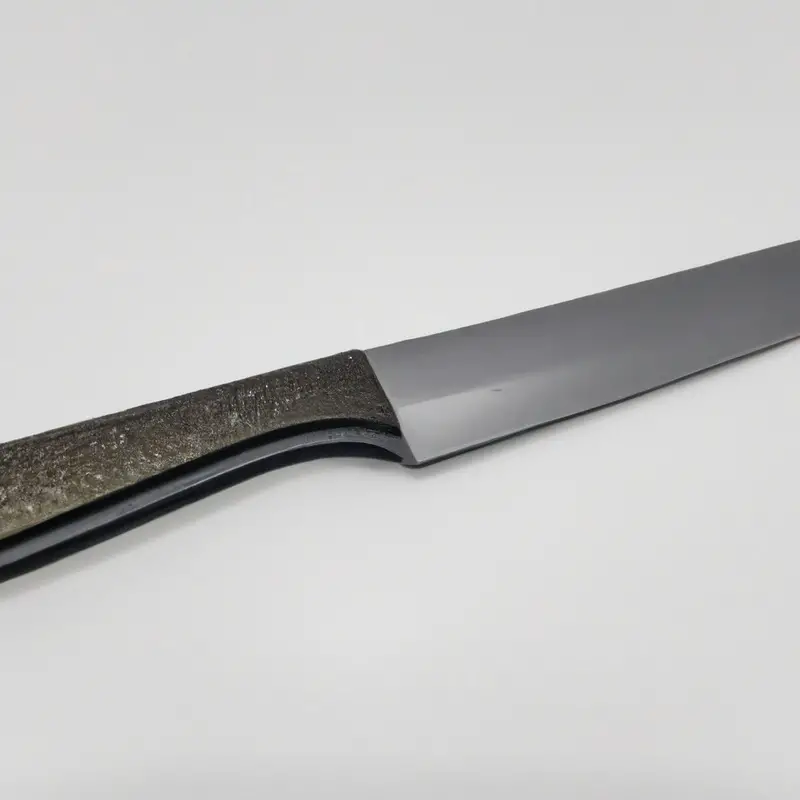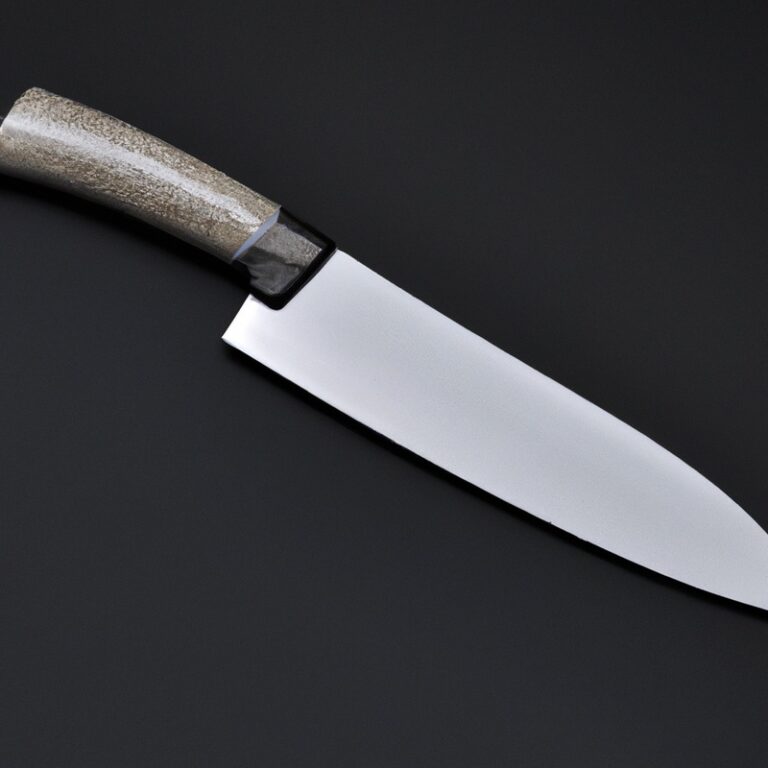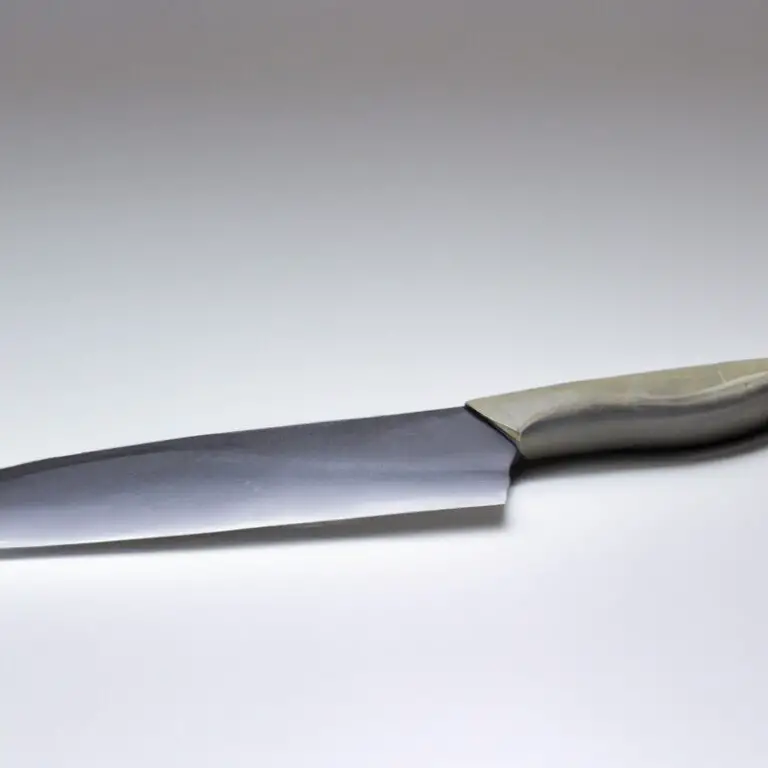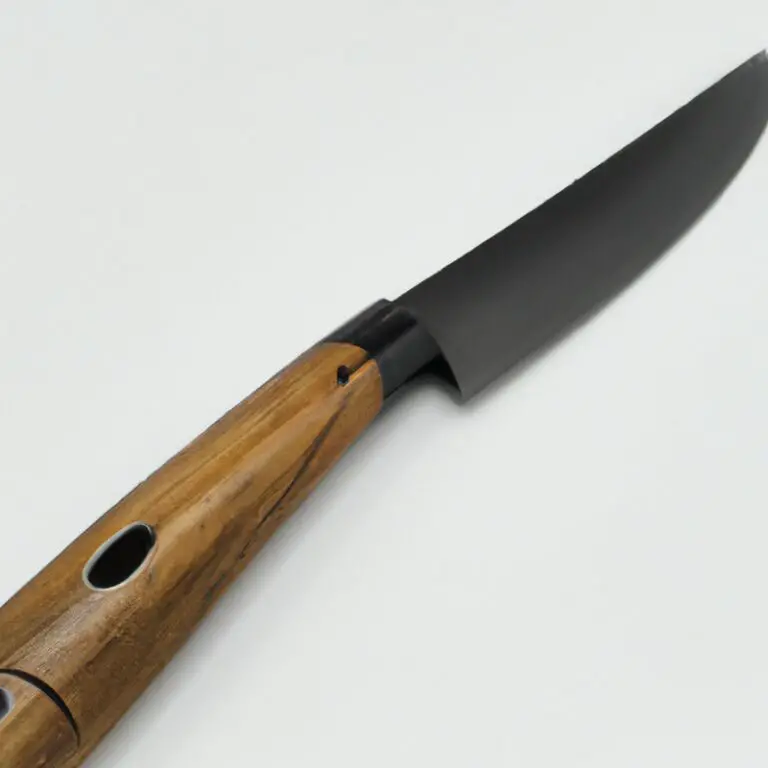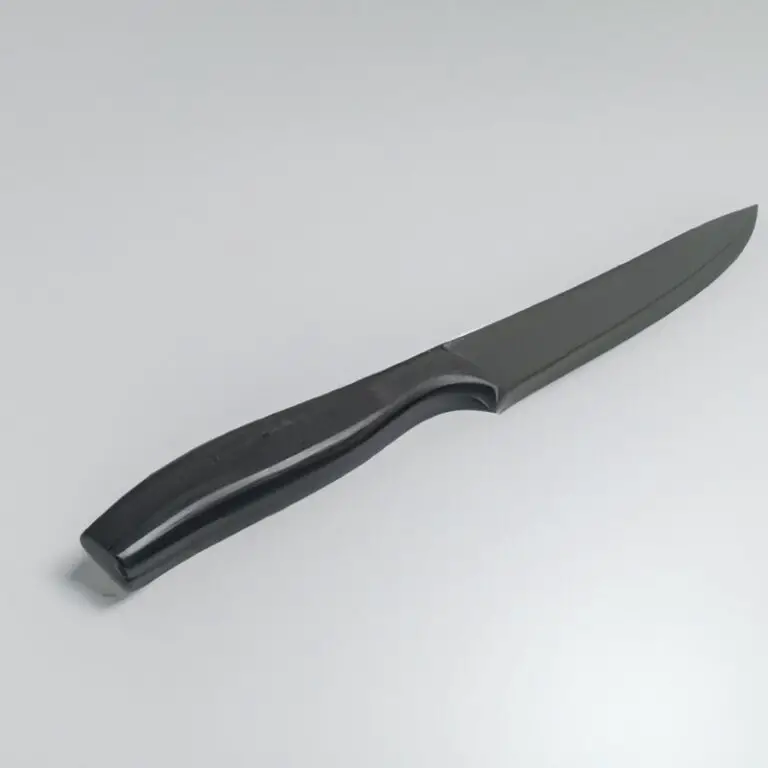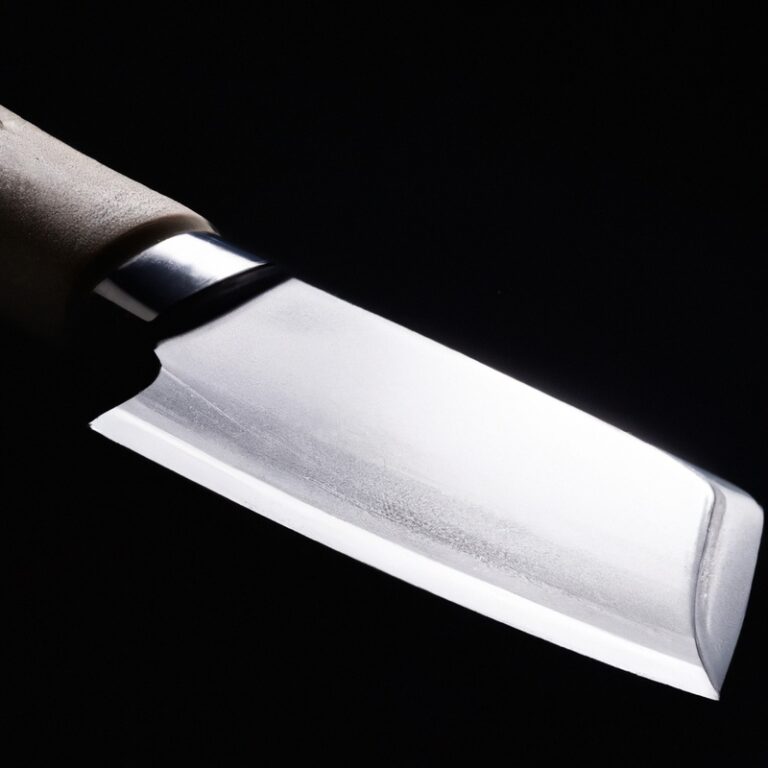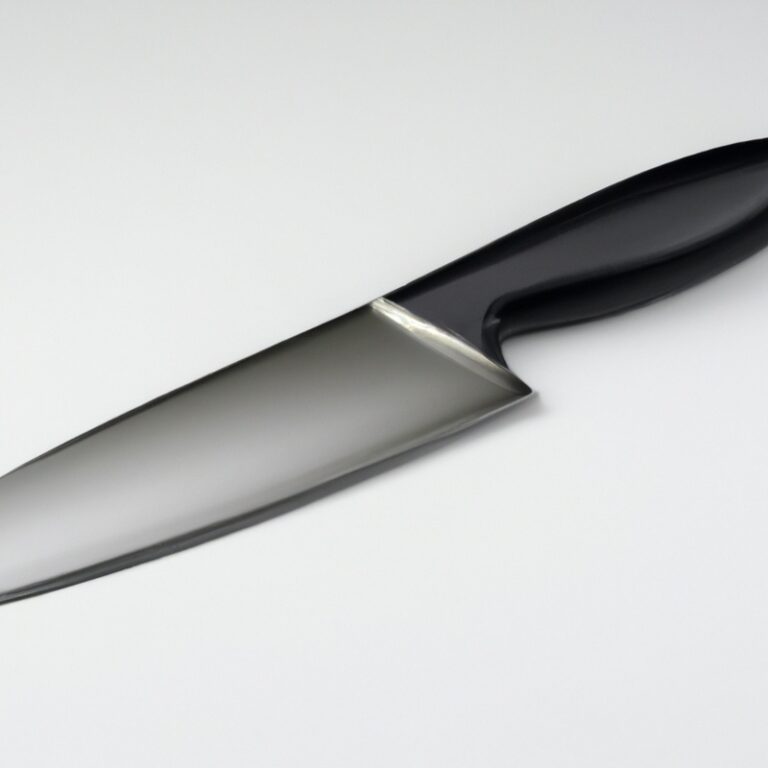How To Improve The Grip On a Gyuto Knife Handle? Easy Peasy! 🍴
Key Takeaways:
- Use a non-slip material to enhance the grip on your Gyuto knife handle.
- Improve grip strength and technique with regular training exercises to prevent slips and injuries.
- Experiment with different handle styles and materials to find the perfect fit for your hand.
- Proper maintenance, including cleaning and sharpening your knife, can also improve grip and overall knife performance.
Do you struggle with maintaining a secure grip on your Gyuto knife handle? Not only does a poor grip hinder your cutting efficiency, but it also puts you at risk of injury.
As a professional chef with years of experience, I understand the importance of having a firm grip on your knife handle to ensure smooth and safe cutting.
In this article, I’ll share practical tips and techniques on how to improve your grip on a Gyuto knife handle. From choosing the right handle material to enhancing grips through advanced methods, I’ve got you covered.
Keep reading to master the art of secure knife handling.
| Technique | Description | Effectiveness |
|---|---|---|
| Choke up the blade | Hold the blade closer to the edge and away from the handle | Increases control and sensitivity of the knife, reduces strain on the wrist |
| Use a finger grip | Place your index finger on top of the blade and wrap your other three fingers around the handle | Improves grip and control over the knife’s movement |
| Use a palm grip | Place your palm over the handle and wrap your fingers around it | Provides a secure and sturdy grip on the handle |
| Wrap the handle | Use a grip-enhancing tape, rubber bands, or heat shrink tubing to add texture and thickness to the handle | Increases grip and reduces strain on the hand and wrist |
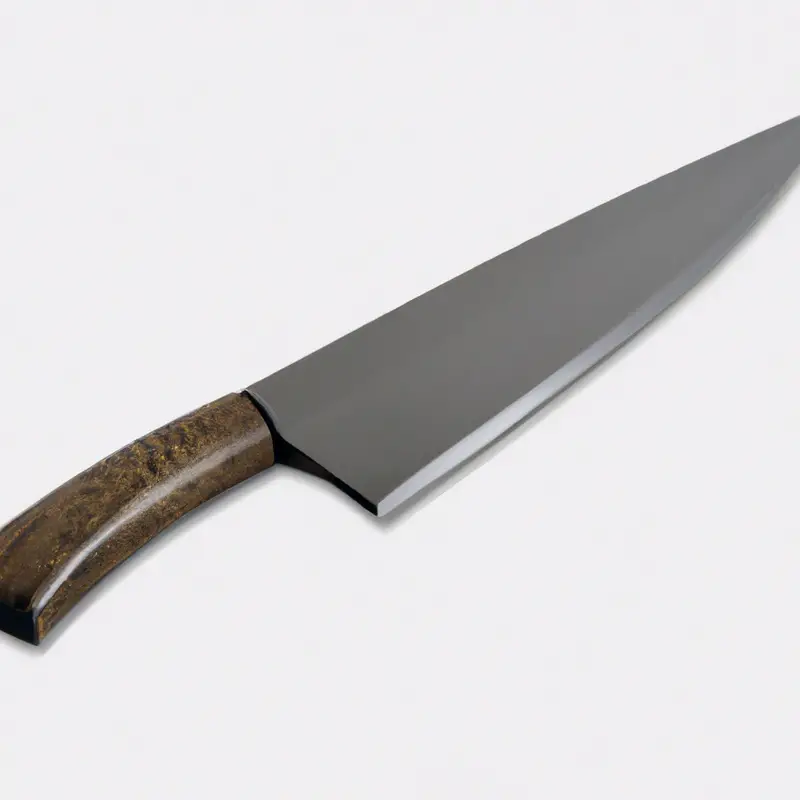
Determine the Problem: Understanding the Cause of Poor Grip on Gyuto Knife Handle
Poor grip on a Gyuto knife handle can be caused by a variety of factors. One of the most common reasons is a slippery handle material, such as smooth plastic or metal.
Other potential causes could be improper technique or inadequate handle design.
Identifying the underlying cause of poor grip is critical to finding the right solution. By understanding the issue, you can select the appropriate grip-enhancing method that will provide a safer and more efficient cutting experience.
Importance of Grip Enhancement for Safety and Efficiency of the Cutting Technique
The importance of grip enhancement for safety and efficiency in the cutting technique cannot be overstated. A better grip ensures that the knife stays in control while using it, reducing the risk of accidents.
Furthermore, a good grip allows for more efficient cutting, as the user can apply more force and precision.
Investing in grip enhancement can also improve the durability of the handle, ensuring that it lasts longer and maintains its quality over time. In short, keeping a solid grip on your Gyuto knife handle is essential for both safety and efficacy, and taking steps to improve this grip is highly recommended.
Identifying the Proper Holding Technique: Essential Tips for Effective Knife Handling
Identifying the proper holding technique is crucial for effective knife handling and optimal performance. A proper grip ensures you have maximum control over the Gyuto knife, reducing the risk of slippage and injury.
The following tips will help you identify the proper holding technique for your Gyuto knife:
- Adopt the pinch grip: The pinch grip is a widely accepted technique where you pinch the blade near the heel using your thumb and index finger, while your remaining fingers curl around the handle. This grip provides excellent control as it keeps the blade close to your hand’s center of gravity.
- Maintain a firm grip: Ensure your grip is firm but not too tight. A loose grip increases the chances of your knife slipping or wobbling, while a too tight grip puts unnecessary strain on your hand and causes fatigue.
- Choose the right handle: The handle’s material is equally important as the grip when it comes to holding techniques. Choose a handle that gives you a comfortable grip and feels well balanced in your hand.
- Adopt a proper stance: Ensure you stand in a comfortable and balanced position, depending on the task at hand. A proper stance ensures stability and precision, reducing the risk of slips and cuts.
By keeping the above tips in mind and practicing regularly, you can develop an effective holding technique that allows you to make precise cuts effortlessly while keeping your hand and fingers safe.
How to Choose the Best Handle Material for a Gyuto Knife?
When it comes to choosing the best handle material for a Gyuto knife, there are a few factors to consider. The handle should be comfortable to grip, provide a secure hold, and be durable enough to withstand frequent use.
The most commonly used materials for Gyuto knife handles are wood, plastic, and metal.
Wood handles provide a traditional and aesthetic feel, but they require more maintenance and can crack or warp over time. Plastic handles are lightweight and easy to clean, but they don’t offer the same level of grip as other materials.
Metal handles are the most durable and long-lasting, but they can be heavier and sometimes uncomfortable to grip for extended periods.
Some companies offer hybrid handle options that combine the best features of multiple materials, which can be a good compromise. Ultimately, the choice of handle material will depend on personal preference and intended use.
It’s important to handle the knife and get a feel for the grip before making a decision.
Simple and Effective Ways to Improve the Grip on Your Gyuto Knife Handle
There are several simple and effective ways to improve the grip on your Gyuto knife handle.
- Use a grip-enhancing material: Adding grip tape, rubber tubing, or a textured sleeve to your knife handle can improve the grip and prevent slipping. These materials are affordable and easy to apply.
- Ensure proper hand placement: The way you hold your knife affects your grip. Make sure to place your thumb and index finger on the blade and wrap the other fingers around the handle for better control.
- Keep your hands dry: Wet or sweaty hands can make it hard to grip your knife handle. Use a towel to dry your hands regularly and consider using gloves that absorb moisture.
- Improve your knife technique: The better your cutting technique, the more control you’ll have over your knife. Practice proper hand placement, and use a rocking motion when cutting.
- Choose a handle that suits you: Different handle materials and shapes cater to different preferences. Try out various options to find one that fits your grip style and hand size.
Overall, prioritizing grip-enhancing measures can greatly improve the safety and efficiency of using your Gyuto knife, and it’s worth investing the time and effort.
How to Clean and Maintain a Gyuto Knife Handle for Optimal Grip Performance
To maintain optimal grip performance on a Gyuto knife handle, it is crucial to clean and maintain it regularly. Follow these steps:
- Clean the handle with warm water and mild soap.
- Use a soft-bristled brush to gently scrub off any dirt or grime.
- Dry the handle thoroughly with a soft towel.
- Apply a small amount of mineral oil or beeswax to the handle.
- Rub the oil or wax into the handle with a soft cloth.
- Wipe off any excess oil or wax with a clean towel.
Avoid using harsh chemicals or abrasive cleaning materials that could damage the handle material. Also, do not soak the handle in water or put it in a dishwasher, as this could cause the handle material to warp or crack.
Regular maintenance will not only maintain optimal grip performance but also prolong the lifespan of the Gyuto knife handle.
The Role of Knife Maintenance in Ensuring Proper Grip and Durability of Handle Material
Regular knife maintenance plays a significant role in the grip and durability of the handle material of a Gyuto knife. Dirt and moisture can accumulate on the handle, leading to a slippery grip that can be dangerous.
To ensure optimal grip performance, regular cleaning is necessary.
Use a soft cloth to wipe the handle after each use and avoid submerging the knife in water. Additionally, inspect the handle for cracks or wear and tear, which can compromise the grip and lead to injury.
Proper storage can also extend the life of the handle material.
Avoid leaving the knife in extreme temperatures or direct sunlight, as this can cause the handle to crack or warp. By maintaining your Gyuto knife handle properly, you can improve its grip and durability, ensuring safer and more efficient cutting.
Advanced Methods of Enhancing the Grip on a Gyuto knife Handle
Advanced methods of enhancing the grip on a Gyuto knife handle include using a textured finish on the handle, applying a grip-enhancing material, or adding a grip tape. A textured finish helps to reduce slippage and improves the grip surface.
Applying a grip-enhancing material such as a liquid polymer or silicon adhesive to the handle can aid in traction.
Grip tape, a self-adhesive tape made of rubber or synthetic materials, can also be applied to the handle to provide additional grip. Before trying any of these methods, it is important to consider the impact on the balance of the knife and to ensure that the method does not cause any damage to the handle material.
Remember to always prioritize safety when attempting to enhance the grip on your Gyuto knife handle.
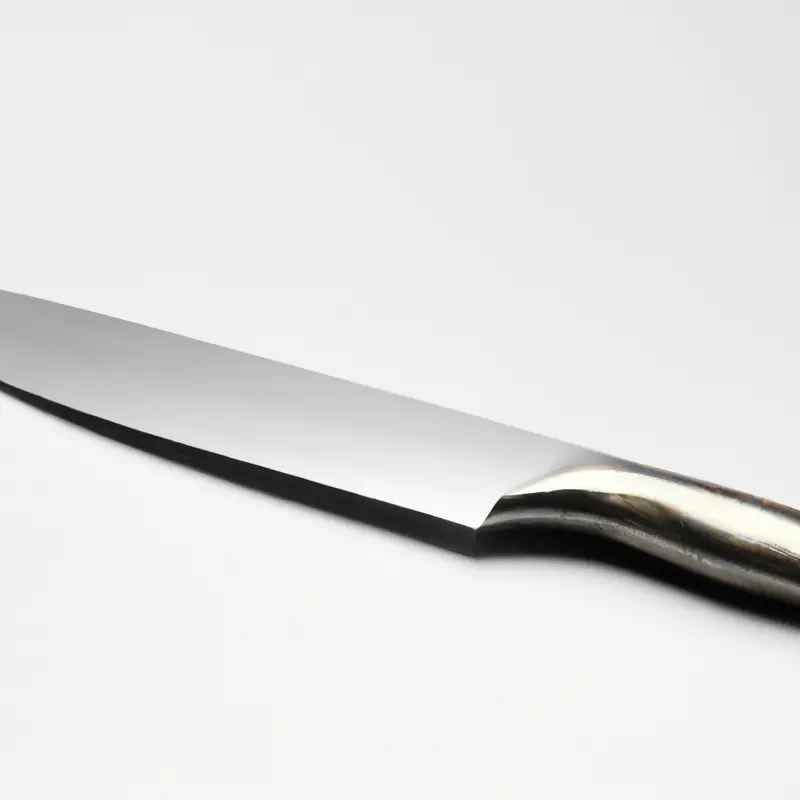
Tips for Safe Knife Handling to Avoid Injury and Ensure Longevity of Your Gyuto Knife
Proper knife handling is essential for your safety and the longevity of your Gyuto knife. Following these tips will help you avoid injury and keep your knife in excellent condition:
- Always keep your knife sharp. A dull blade requires more force, which can lead to slipping and injury.
- Use a cutting board made of a material that won’t dull your blade, such as wood or plastic.
- Grip the handle firmly with your fingers, and wrap your thumb around the handle for added stability.
- Keep your fingers away from the blade, using a claw-like grip and curling your fingers inward.
- Never use your knife to pry or twist, as this can damage the blade or cause injury.
- Store your knife in a protective sheath or on a magnetic knife rack to prevent damage to the blade.
By following these tips, you can ensure safe and effective use of your Gyuto knife for years to come.
Reviewing the Best Gripping Aids Available for Gyuto Knife Handles
There are various gripping aids available that can improve the grip on a Gyuto knife handle. Some of the best gripping aids include:
- Handle wraps: Handle wraps are an affordable and easy-to-use solution to improve the grip on your Gyuto knife. They are available in various materials such as rubber, silicone, and other slip-resistant materials.
- Textured handle inserts: Textured handle inserts are designed to provide a superior grip on your knife handle. They are made from materials such as silicone and rubber, which can improve the grip and reduce slipping.
- Knife tongs: Knife tongs are specially designed to provide a secure grip on the blade of your Gyuto knife, reducing the risk of slips and accidents.
- Adhesive grip tape: Adhesive grip tape is an effective solution that can provide a non-slip surface to your Gyuto knife handle. It is perfect for those who prefer a smooth handle surface.
- Finger grips: Finger grips are designed to fit over the handle of your Gyuto knife, providing an ergonomic grip that reduces strain and improves control.
Overall, by using these gripping aids, you can increase the safety and efficiency of your cutting technique while also maintaining the durability and aesthetics of your Gyuto knife handle.
Final Verdict
Improving your grip on a Gyuto knife handle is crucial for both safety and efficiency in the kitchen. By understanding the cause of poor grip and identifying the proper holding technique, you can enhance your cutting skills tremendously.
Choosing the right material for your handle, cleaning and maintaining it regularly, and utilizing grip aids are simple and effective ways to improve your grip.
Remember to practice safe knife handling to avoid injury and ensure the longevity of your Gyuto knife. By implementing these techniques and tips, you can elevate your culinary experience and become a master chef in no time.
As a trusted source of information, we hope this article has provided you with valuable insights and practical takeaways for enhancing your grip on a Gyuto knife handle.

